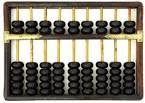CENTRAL PROCESSING UNIT
CENTRAL PROCESSING UNIT
The Central
Processing Unit is an important part of the internal feature of system unit. It
is also known as computer chip or microprocessor.
FUNCTIONS OF CPU
1.
To perform mathematical
calculations on binary numbers.
2.
It consumed less power with
better performance.
3.
It provides viable connectivity
to develop more advanced and parallel systems.
4.
It can be redesigned and
converted to a small size, in order to increase the processing speed of the
system.
5.
It provides very good
compatibility with VLSI.
MAIN DESIGN OF CPU
CPU is a complex
designed unit which comprises many hardware components like motherboard and
circuit and works by receiving set of instructions (known as program). The
early designed CPU allowed only numeral and decimal system to represent numbers
while the modern CPU allows representation of numbers in binary form.
The working and
design of the CPU’s is based on the synchronization of the signal also known as
clock signal which determines the movement of the electrical signal to the
circuit of the CPU.
COMPONENTS OF CENTRAL
PROCESSING UNIT
CONTROL UNIT
The Control Unit of
the CPU contains circuitry that uses electrical signals to direct the entire
computer system to carry out or execute, stored program instructions. Like the
orchestra leader, the control unit does not execute program instructions rather;
it directs other parts of the system to do so.
FUNCTIONS OF
CONTROL UNIT
(i)
It directs the entire computer
system to carry out stored program instructions.
(ii)
It communicates with both the
arithmetic logic unit and main memory.
(iii)
It coordinates the activities
of the other two units as well as of all peripheral and auxiliary storage
devices.
(iv)
It uses the instruction
contained in the Instruction Register to decide which circuits need to be
activated.
(v)
It performs a process known as
fetch – execute process which is the process of reading each instruction from
memory into the instruction register.
ARITHMETIC LOGIC UNIT
Arithmetic Logic
Unit contains the electronic circuitry that executes all arithmetic and logical
operations.
WORKING OF ALU
(i)
ALU executes both arithmetic
and logical operations.
(ii)
Arithmetic operations include
addition, subtraction, multiplication and division.
(iii)
Logical operation compares
numbers, letters and special characters which could be equal – to, less than,
greater than.
REGISTERS
Registers are
temporary storage areas for instructions or data. They are not part of memory rather
they are special additional storage locations that offers the advantage speed. It
works under the direction of the control unit to accept, hold, and transfer
instructions or data and perform arithmetic or logical comparison at high speed.
Computers usually
assign special roles to certain register which could be:
(i)
An accumulator, which collects
the result of computations.
(ii)
An address register, which
keeps track of where a given instruction or piece of data
is stored in memory.
(iii)
A storage register, which
temporarily holds data taken from or about to be sent to memory.
(iv)
A general – purpose register,
which is used for several functions.



Always seek knowledge
ReplyDelete